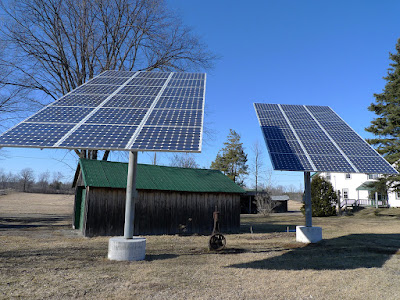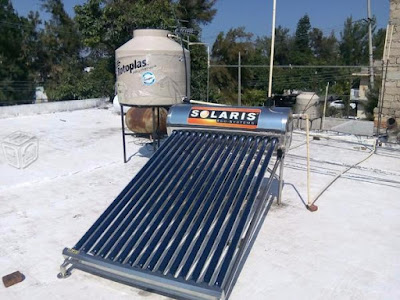Four years prior a viral crusade charmed the world with a guarantee of battling environmental change and kicking off the economy by supplanting landing area on the world's streets with sun based boards. The intense thought has experienced some street testing from that point forward. The primary outcomes from fundamental investigations have as of late turned out, and they're a bit disappointing.
A sun based board lying under a street is at various detriments. As it's not at the ideal tilt edge, it will deliver less power and it will be more inclined to shading, which is an issue as shade over only 5% of the surface of a board can lessen control age by half.
The boards are likewise prone to be secured by soil and dust, and would require far thicker glass than traditional boards to withstand the heaviness of movement, which will additionally restrict the light they retain.
Read increasingly: Solar freak-in' roadways? Why the eventual fate of this innovation may not be so splendid.
Unfit to profit by air flow, its unavoidable these boards will warm up in excess of a housetop sun based board as well. For each 1°C over ideal temperature you lose 0.5% of vitality proficiency.
Accordingly a critical drop in execution for a sun based street, contrasted with housetop sun based boards, must be normal. The inquiry is by what amount and what is the financial expense?
The street test results are in
One of the main sunlight based streets to be introduced is in Torturous-Au-Perch, France. This has a most extreme power yield of 420 kW, takes care of 2,800 m² and expense €5m to introduce. This infers an expense of €11,905 (£10,624) per introduced kW.
While the street assumed produce 800 kilowatt hours out of each day (kWh/day), some as of late discharged information shows a yield more like 409 kWh/day, or 150,000 kWh/yr. For a thought of how much this is, the normal UK home uses around 10 kWh/day. The street's ability factor – which estimates the effectiveness of the innovation by partitioning its normal power yield by its potential most extreme power yield – is only 4%.
Interestingly, the Cestas sun powered plant close Bordeaux, which highlights columns of sun oriented boards painstakingly calculated towards the sun, has a most extreme power yield of 300,000 kW and a limit factor of 14%. What's more, at an expense of €360m (£321m), or €1,200 (£1,070) per introduced kW, one-tenth the expense of our sunlight based roadway, it creates three times more power.
In America, an organization called Solar Roadways has built up a savvy expressway with sun powered boards, including sensors and LED lights to show activity alerts about any forthcoming dangers, for example, a deer. It additionally has warming cushions to liquefy snow in winter.
A few of their SR3 boards have been introduced in a little segment of asphalt in Sandypoint, Idaho. This is 13.9 m² in territory, with an introduced limit of 1.529 KW. The establishment cost is given as $48,734 (about £37,482), which suggests an expense for each introduced kW of €27,500 (£24,542), in excess of 20 times higher than the Cestas power plant.
Sunlight based Roadway's own appraisals are that the LED lights would devour 106 MWh per path mile, with the boards producing 415 MWh – so over 25% of the valuable power is devoured by the LEDs. This would decrease execution considerably further. The warming plates are additionally cited as drawing 2.28 MW per path mile, so running them for only six days would counteract any net gain from the sun based boards.
Furthermore, this is before we take a gander at the genuine information from the Sandypoint establishment, which produced 52.397 kWh in a half year, or 104.8 kWh over a year. From this we can gauge a limit factor of only 0.782%, which is 20 times less effective than the Cestas control plant.
All things considered, it ought to be brought up that this board is in a town square. In the event that there is one thing we can close, it's that an area of asphalt encompassed by structures in a cold northern town isn't the best place to find a sunlight based establishment. In any case, maybe there's a greater point – sun oriented streets on city lanes are simply not an awesome thought.
Coming up short on street:
Streets don't really speak to as expansive a territory as we expect. The UK branch of transport gives a breakdown of the length of the UK's distinctive street composes.
Expecting we can clad these in sun powered boards, four paths of each motorway, two paths on the An and B streets and a large portion of a path for C and U streets (a considerable measure are single track streets and just won't be appropriate) we think of a surface region of 2 billion m².
Which sounds like a ton, until the point that you understand that structures in the UK's urban regions possess a zone of 17.6 billion m². So simply covering a small amount of the UK's housetops with sun powered boards would quickly yield more power than putting them on streets. That is very separated from the advantages that a more lifted position would yield for more noteworthy power age.
The majority of this recommends just a little division of the street system would really be appropriate. What's more, given the generally little size of the street organize, sun powered streets could just at any point turn into a specialty wellspring of intensity and never the easy route to our future vitality supply.





No comments:
Post a Comment